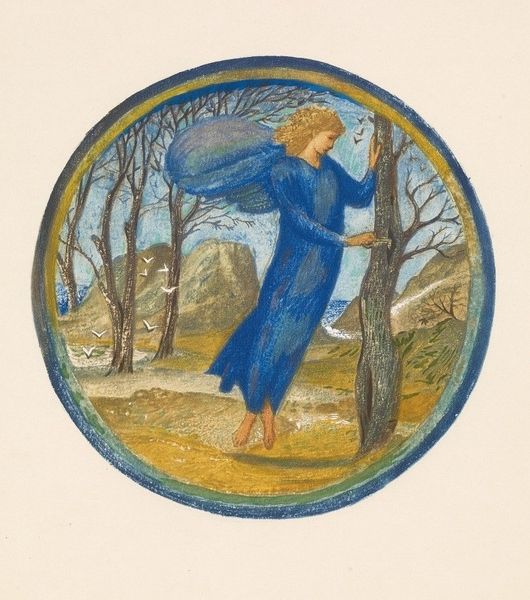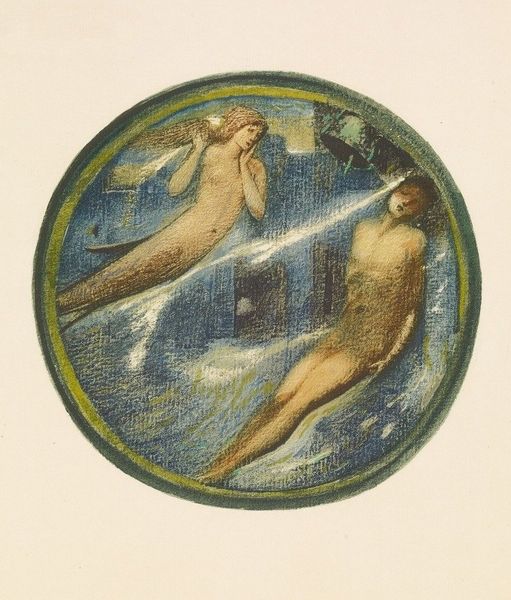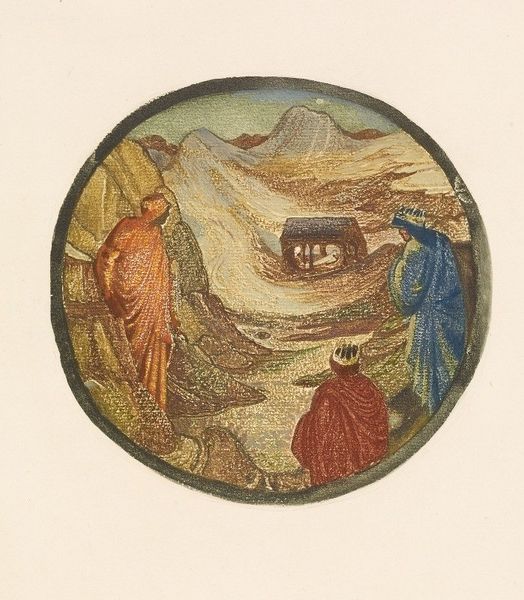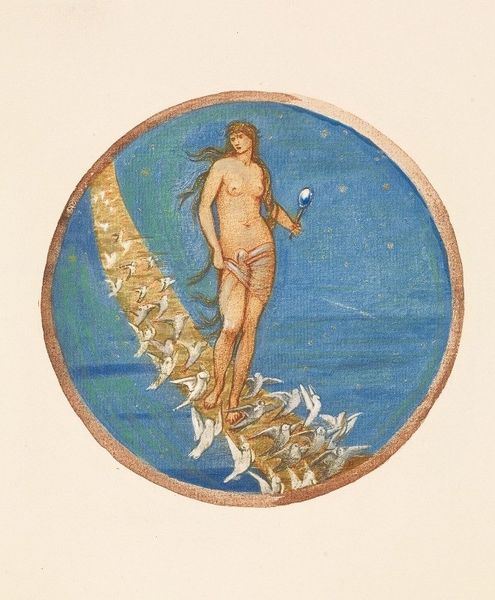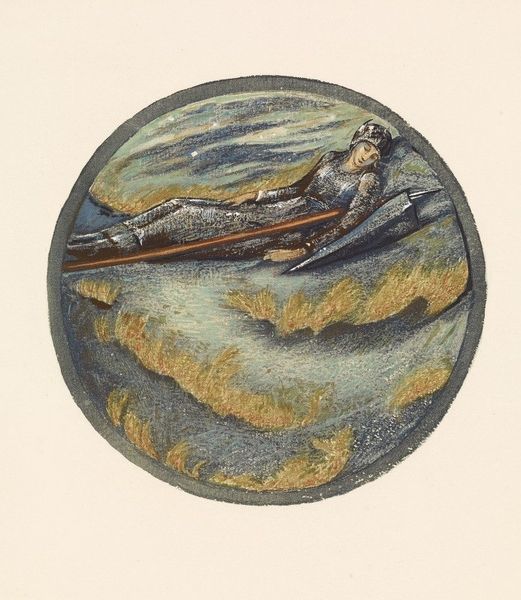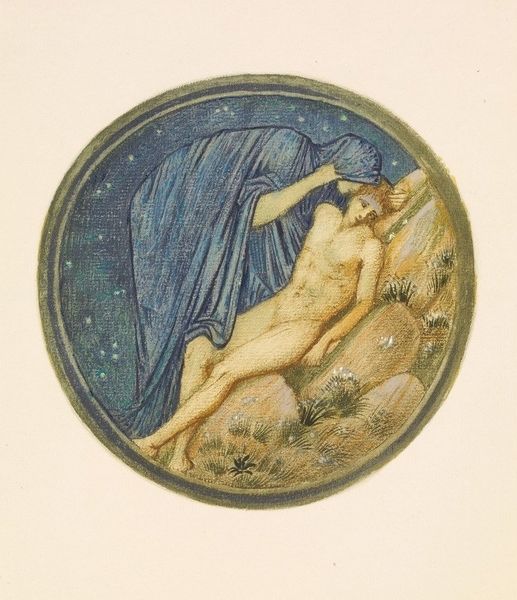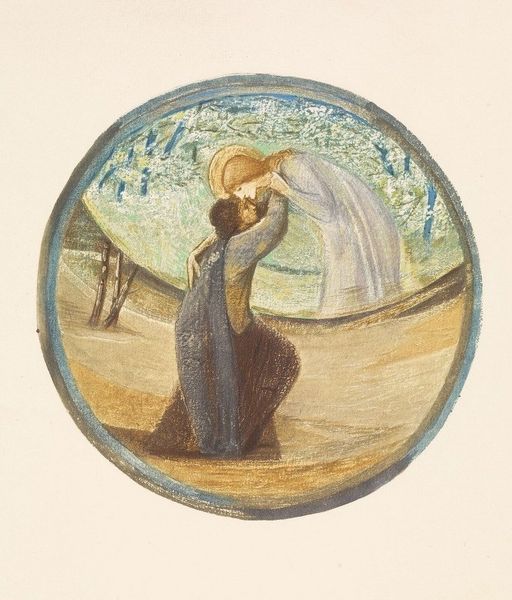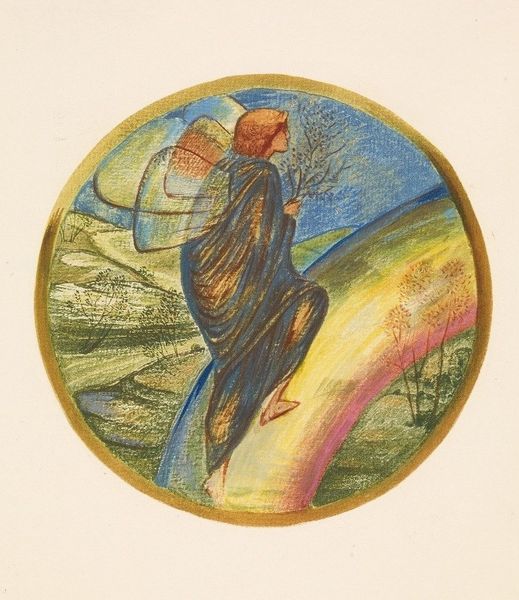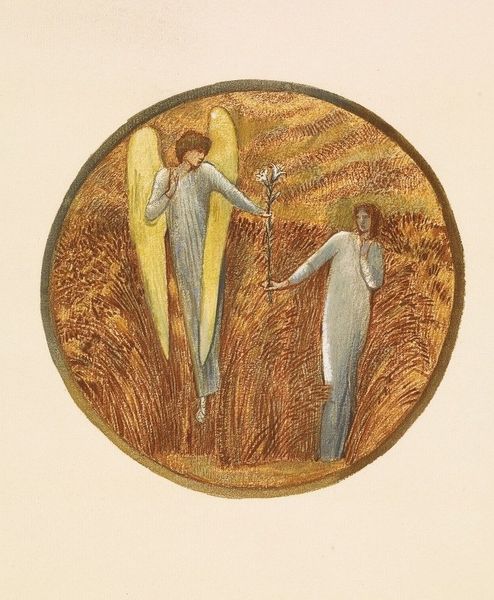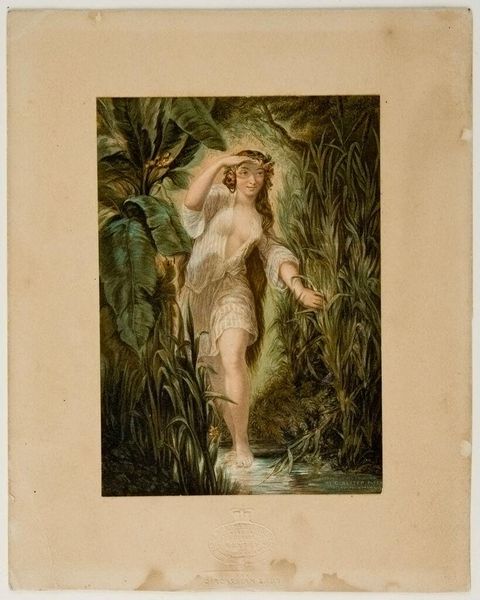
drawing, coloured-pencil, watercolor, pencil
#
portrait
#
drawing
#
coloured-pencil
#
landscape
#
figuration
#
oil painting
#
watercolor
#
coloured pencil
#
pencil
#
symbolism
#
watercolour illustration
#
pre-raphaelites
Copyright: Public Domain: Artvee
Curator: Let’s turn our attention to *Marvel of the World*, created in 1905 by Edward Burne-Jones. It's a striking work executed with colored pencil, watercolor and pencil, combining figuration and landscape elements within a round format. Editor: It gives me a melancholic impression, a wistful yearning. The soft lines and muted palette, the delicate pose of the figure... there's a Pre-Raphaelite romanticism to it that's immediately captivating. The circular frame feels both containing and infinite. Curator: The material handling contributes significantly to that effect. Burne-Jones and his contemporaries saw the artistic process, including the labor, as inherently valuable. These drawing tools, relatively simple, are used to portray something fantastical, eliding any clear difference between ‘high art’ and the work needed to create it. Editor: Absolutely. Thinking formally, look at how the subtle blending of colours in her gown contrasts with the rougher strokes used to depict the water and foliage. It draws your eye directly to the figure, highlighting her almost ethereal presence in the natural world. Semiotically, one could even see her elongated limbs and flowing hair as signifiers of freedom or an unearthly being, connected but also set apart from nature. Curator: I would agree; this resonates with a fascination the Pre-Raphaelites had with classical themes of beauty but filtered through the Victorian imagination. These were turbulent times. Labor was changing and it’s interesting to think of this figure not only as beauty for beauty's sake but an echo of changing views about working female models or a potential commentary on societal expectations for women, though very subtly woven into the composition. Editor: Indeed. And the way she's positioned within the landscape, neither entirely submerged nor fully on solid ground...it speaks to that liminal space between the tangible and the ideal, a powerful recurring theme. Her ambiguous expression is haunting. Curator: Yes, ultimately, a very tactile piece which reminds us how labor and consumption are inherently beautiful, especially within the societal changes that happened then. Editor: I appreciate how this artwork offers not just an aesthetic experience but also intellectual challenge. It is a testament to Burne-Jones skill and the power of the symbolist movement.
Comments
No comments
Be the first to comment and join the conversation on the ultimate creative platform.

